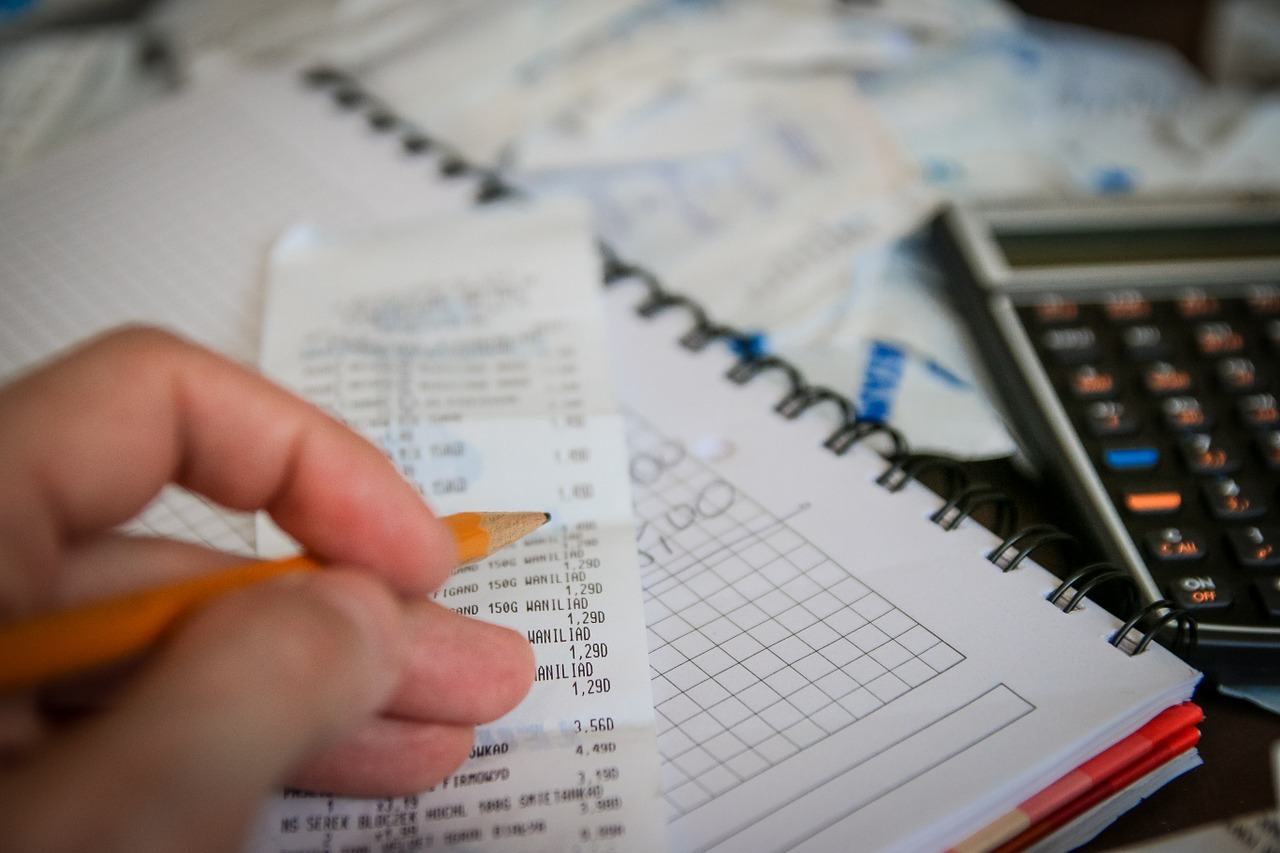Category: Bookkeeping Guides
-

How to Set Up Your Bookkeeping Business as a Self-Employed Professional: Step-by-Step Guide
Laying the Groundwork: Bookkeeping Skills and Essentials Self-employed bookkeepers need strong technical skills, a good understanding of financial reporting, and knowledge of how bookkeeping fits into business operations. Reliable recordkeeping and awareness of financial responsibilities help maintain accuracy, legal compliance, and client trust. Core Bookkeeping Principles Accurate, consistent, and organized work forms the base of…
-

Bookkeeping Basics: A Beginner’s Guide to Managing Small Business Finances
Understanding Bookkeeping Fundamentals Small businesses use accurate financial tracking to monitor income and control spending. This also helps them stay compliant with tax rules. Clear records support better decision-making. They reveal the company’s true financial position. What Is Bookkeeping? Bookkeeping means recording and organizing all financial transactions a business makes. It involves tracking sales, purchases,…
-

Essential Bookkeeping Skills Every Freelancer Should Learn: A Practical Guide
Core Bookkeeping Skills for Freelancers Freelancers need to control their financial records to stay organized. This helps them make informed decisions and meet tax responsibilities. They should record income and expenses correctly. Managing invoices and payments on time is important. Freelancers also need to check that bank records match bookkeeping entries. Accurate Income and Expense…
-

How to Start a Career in Bookkeeping with No Experience: Step-by-Step Guide
Understanding the Role of a Bookkeeper A bookkeeper records, organizes, and maintains financial data for a business. They ensure that transactions are accurate, up to date, and follow financial regulations. Their work supports accountants and helps business owners make informed decisions. Key Responsibilities Bookkeepers handle the daily financial activities that keep a business organized. They…
-

How To Write Down Assets in a Business Using Bookkeeping Principles
Understanding Asset Write-Downs and Write-Offs Asset write-downs reduce an asset’s recorded value to reflect market conditions or impairment. Write-offs eliminate an asset’s value entirely when it becomes worthless or uncollectible. Definition of Asset Write-Downs A write-down is an accounting practice that reduces an asset’s recorded value on a company’s books. This happens when the current…
-

Guide to Offshoring Bookkeeping from the USA: Strategies & Compliance
Understanding Offshoring Bookkeeping from the USA Offshoring bookkeeping involves hiring accounting professionals in other countries to handle financial tasks remotely. This practice differs from traditional outsourcing and offers specific advantages for American businesses seeking cost-effective financial solutions. Definition of Offshoring Bookkeeping Offshoring bookkeeping means hiring financial professionals in foreign countries to manage a company’s accounting…
-

The Top Ten Trickiest Transactions Bookkeepers Need To Master
Mastering Complex Business Expense Transactions Business expense transactions require careful handling to maintain accurate financial records and maximize tax benefits. The key challenges involve separating business costs from personal spending, identifying legitimate deductions, and properly recording reimbursements. Differentiating Between Business and Personal Expenses Separating business and personal expenses forms the foundation of proper bookkeeping. Many…
-

The Most Important Bookkeeping and Accounting Terms for Newcomers: Essential Definitions and Concepts
Core Bookkeeping Terms Every Newcomer Should Know Understanding the basic building blocks of bookkeeping helps you manage financial records accurately. These key ideas explain the difference between bookkeeping and accounting and introduce essential bookkeeping terms. They also clarify financial transactions and define the accounting period. Bookkeeping vs. Accounting Bookkeeping means recording daily financial transactions such…
-

How to Set Up a Chart of Accounts for Bookkeeping and Accounting: Step-by-Step Guide
Core Principles of a Chart of Accounts A well-structured chart of accounts (COA) helps keep financial records accurate. It organizes transactions into clear categories that reflect a company’s financial activity. This system supports effective bookkeeping and forms the foundation for reliable financial statements. Purpose and Importance for Bookkeeping The chart of accounts lists all accounts…
-

Choosing Bookkeeping and Accounting Software: A Beginner’s Guide for Small Businesses
Identifying Your Bookkeeping and Accounting Needs Start by understanding what your business needs from bookkeeping and accounting software. Consider business size, main financial tasks, and who will use the software. Knowing your needs helps you avoid paying for unnecessary features. Assessing Business Size and Complexity Business size affects which software works best. Small businesses with…
-

Understanding Debits and Credits in Bookkeeping and Accounting: A Comprehensive Guide
The Fundamentals of Debits and Credits Debits and credits are essential to bookkeeping and accounting. They track changes in financial accounts and keep the books balanced. Each transaction affects at least two accounts. One side receives a debit, and the other receives a credit to show increases or decreases. The Role of Debits and Credits…
-

A Beginner’s Guide to Bank Reconciliation in Bookkeeping: Essential Steps and Best Practices
Differences can occur due to: For instance, if you mailed a check to a vendor at the end of the month, it might not appear on your current bank statement but will show in your books as an outstanding check. Identifying and explaining these items is a crucial part of the process. Accounting Software Modern…
-

Top Bookkeeping and Accounting Mistakes Beginners Should Avoid
Failing to Separate Business and Personal Finances Business owners need to keep business and personal finances separate for clear records. Mixing these expenses causes confusion and errors in tracking business costs, income, and taxes. Proper separation prevents financial mistakes and legal trouble. Mixing Personal and Business Expenses Business owners who use the same funds for…
-

How to Close a Set of Books at Year End in Accounting: A Beginner’s Guide (USA)
Understanding Year-End Close and Its Importance Year-end close represents the final accounting period when businesses finalize their financial records and prepare accurate statements for the fiscal year. This process ensures compliance with regulations and provides a clear financial picture for decision-making and tax preparation. Purpose of Closing the Books The year-end close process serves as…
-

Bookkeeping and Accounting for Taxes: Record-Keeping Essentials Guide
Core Bookkeeping Principles for Tax Compliance Accurate and organized records are essential for tax compliance. Businesses and individuals need to track all financial transactions, use consistent methods, and keep records ready for tax preparation and audits. Understanding Tax-Ready Bookkeeping Tax-ready bookkeeping means organizing financial data to meet IRS standards and deadlines. You should document all…
-

How to Detect and Prevent Fraud in Bookkeeping and Accounting
Understanding Fraud in Bookkeeping and Accounting Fraud in bookkeeping and accounting happens when people deliberately change financial records for personal gain or to hide losses. Fraud can take many forms and can harm the accuracy of financial statements and the trust in a business. Small businesses face higher risks because they often have weaker controls.…
-

How to Organize Receipts for Bookkeeping and Accounting Effectively
Understanding the Importance of Organizing Receipts Organizing receipts helps keep financial records accurate. When you handle receipts properly, bookkeeping becomes clearer and tax filing is easier. Receipts prove business transactions. They let you record expenses, purchases, and payments. Bookkeepers use receipts to enter data into accounting systems. Each receipt gives details like date, vendor, amount,…
-

Year-End Bookkeeping and Accounting Checklist for Small Businesses: Complete Steps for a Strong Financial Close
Catch Up and Review Bookkeeping Update all transactions, clean accounts, and document expenses thoroughly to catch up on bookkeeping. These actions give a clear and accurate picture of financial health. Consistent effort helps small business accounting maintain reliable records. This approach makes year-end bookkeeping smoother. Update All Transactions Enter every transaction from the past months…
-

Treasurers Guide Part 1
Treasurers are usually unpaid volunteers, if you are one of these, welcome to the club. Your job can range from the ridiculously easy to the incredibly complex. If you have just volunteered to be a treasurer for your local club, society, or charity, help is at hand. The right ground rules, simple systems, and a…
-
SSAP and FRS
(extant at 1 January 2001) Reproduced with kind permission from The Corporate Training Group Limited Statements of standard accounting practice Financial reporting standards Summary of UK accounting standards UITF abstracts SSAP2 Disclosure of accounting policies (see FRS 18) SSAP4 Accounting for government grants SSAP5 Accounting for value added tax SSAP9 Stocks and long term contracts…
